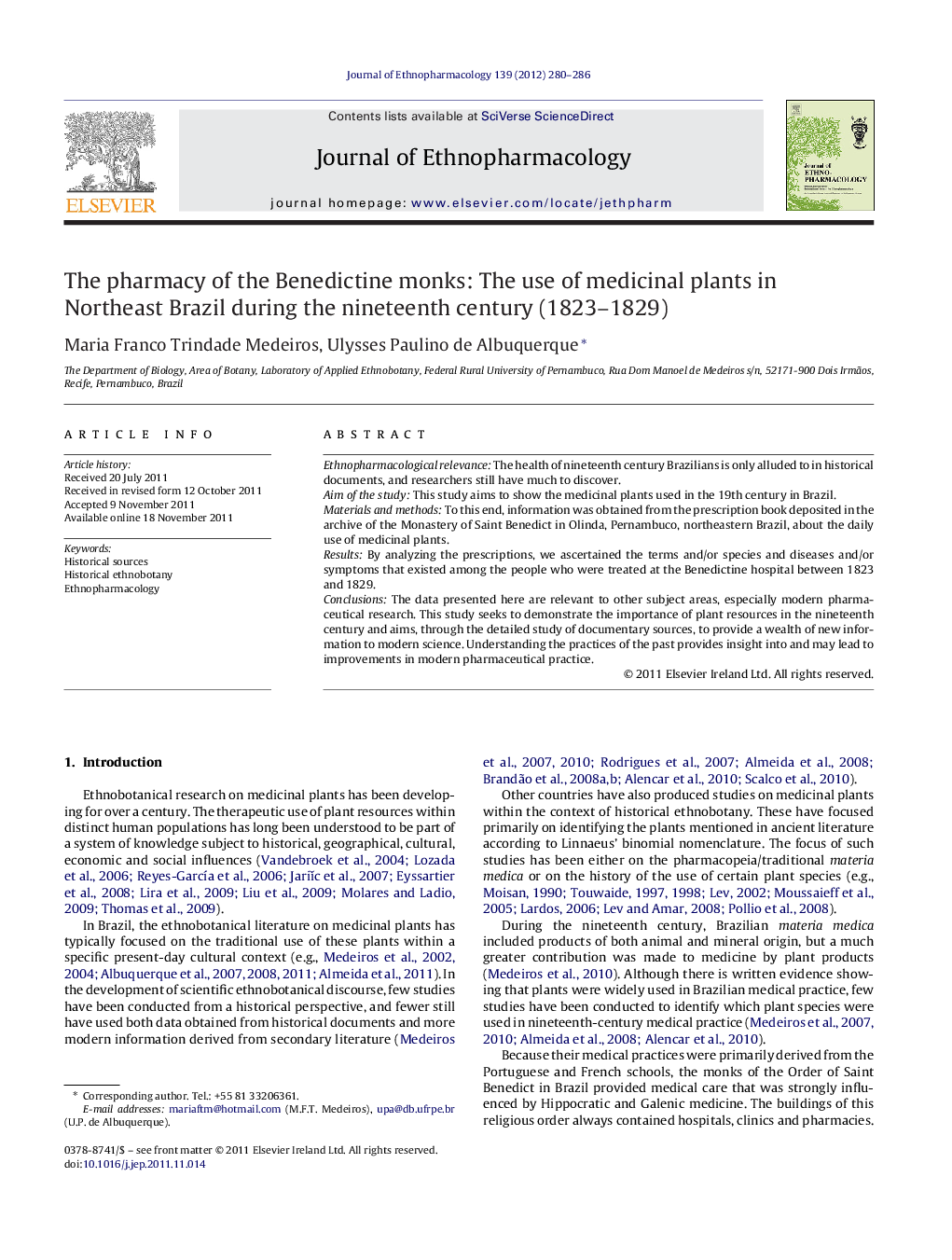| Article ID | Journal | Published Year | Pages | File Type |
|---|---|---|---|---|
| 5839147 | Journal of Ethnopharmacology | 2012 | 7 Pages |
Abstract
Ethnopharmacological relevanceThe health of nineteenth century Brazilians is only alluded to in historical documents, and researchers still have much to discover.Aim of the studyThis study aims to show the medicinal plants used in the 19th century in Brazil.Materials and methodsTo this end, information was obtained from the prescription book deposited in the archive of the Monastery of Saint Benedict in Olinda, Pernambuco, northeastern Brazil, about the daily use of medicinal plants.ResultsBy analyzing the prescriptions, we ascertained the terms and/or species and diseases and/or symptoms that existed among the people who were treated at the Benedictine hospital between 1823 and 1829.ConclusionsThe data presented here are relevant to other subject areas, especially modern pharmaceutical research. This study seeks to demonstrate the importance of plant resources in the nineteenth century and aims, through the detailed study of documentary sources, to provide a wealth of new information to modern science. Understanding the practices of the past provides insight into and may lead to improvements in modern pharmaceutical practice.
Related Topics
Health Sciences
Pharmacology, Toxicology and Pharmaceutical Science
Pharmacology
Authors
Maria Franco Trindade Medeiros, Ulysses Paulino de Albuquerque,
